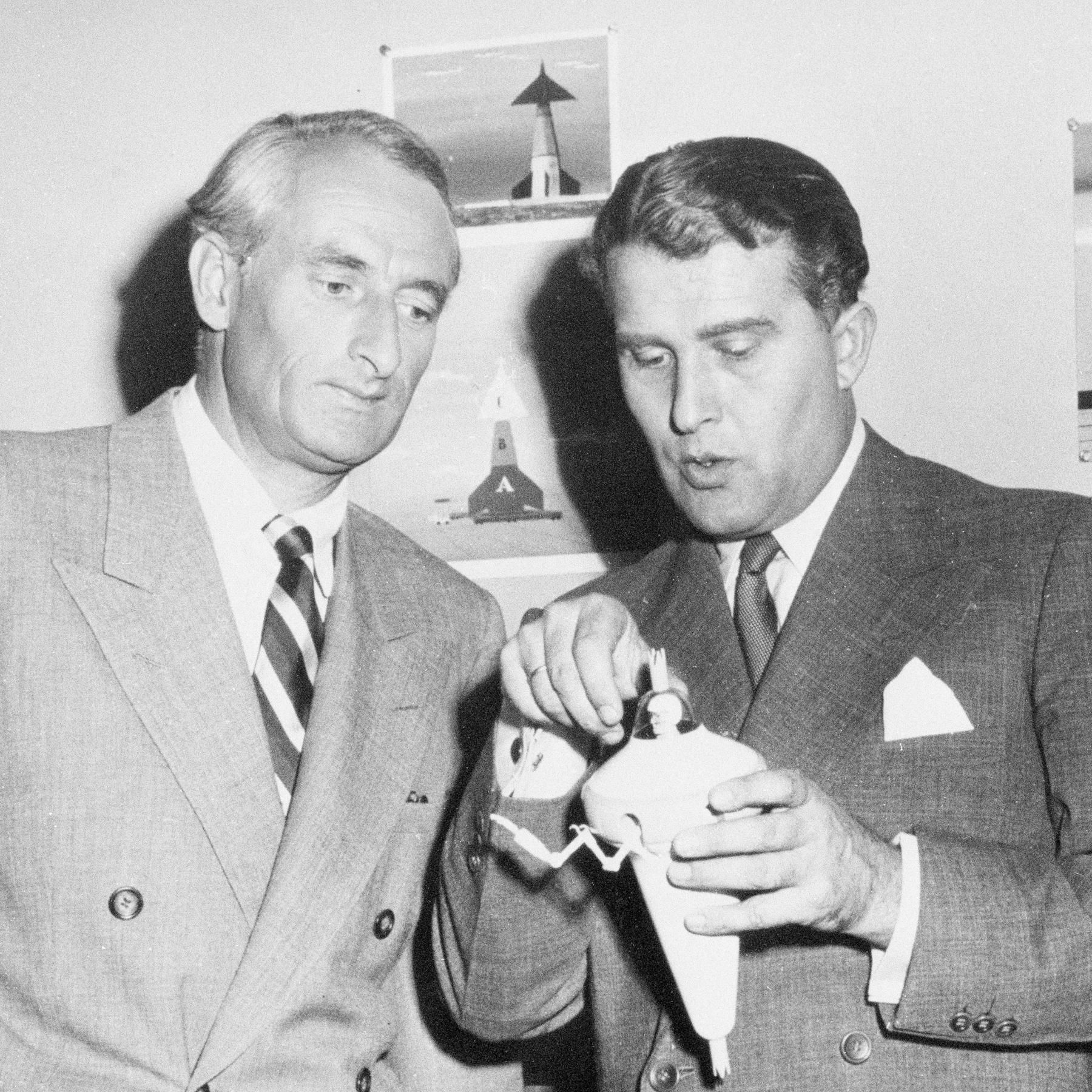Weightless route flight

The earth is always pulling us to its center with its gravity, a force to which all bodies on the planet are subjected. At the beginning of the space program of the United States, reduced gravity was an important matter in the general body behavior, making this study a key to space exploration and transportation, and a capability of testing the personnel and equipment.

For this option, it is necessary to simulate a zero gravity or, well said, a weightless environment. Here comes the role of Fritz Haber, an aeronautical engineer, and Heinz Haber, the physicist who proposed the idea of a gravity-free environment similar to space, simulating this by means of parabolic flight using an aircraft.

They were recruited after World War II in operation paperclip, serving the American Space Program. The Haber brothers were researching the effects of space travel on humans and animals.
Parabolic flight allows for the training of astronauts, and the studies of the living organisms in weightlessness, such as the experiments with cats’ orientation, and with pigeons in observing how their navigation capabilities are affected.
The training of astronauts helps the experiments, and floating activities inside the aircraft, this changes the body behavior and could cause airsickness, and dizziness, among others. The plane is commonly known as Vomit Comet, thanks to this effect. When starting these flights, NASA 1959 used a C-131 Samaritan aircraft for carrying out the astronauts’ training and contributing to Project Mercury.

Flying in a parabolic flight, the reduced-gravity aircraft needs to perform a parabolic trajectory relative to the center of the earth. When this happens, the things within the aircraft experience a free fall, a sensation similar to orbiting the earth.

The aircraft is set on a 45-degree climb (nose high) on full engine thrust, at this state the bodies within the plane are subjected to 1.8g because of the engine acceleration and the earth’s gravity. after the lapse of 20 seconds, the engines are set on almost null thrust. All forces other than gravity are canceled out and the plane is in freefall. Then, the weightlessness begins within the first 25 seconds approximately. The plane goes to 45 below horizontal, so the engines are set on the power again experiencing the 1.8g. in this way, the parabolic flight is performed. Throughout the flight, all personnel is kept continuously informed of the flight status, i.e. indication of how many seconds to the next parabola, the number of minutes of the rest period, etc.
A relevant story is that this parabolic flight technique was used while filming the “Apollo 13” Movie, The scenes were shot aboard a KC-135 NASA, simulating the null gravity in the astronauts’ activities in the film.
Since 1984, the ESA used a NASA KC-135 in the beginning, and from 1996 flew an A300 Airbus “Zero-G” of Novespace, in 2014 the aircraft was replaced by an A310 equipped for parabolic flights, it was first used for scientific research in May 2015.
The Airbus Zero-G is now the world’s largest zero-gravity aircraft in terms of passenger capacity and experiment surface area, enabling scientists and the general public to access gravity-free conditions.
Airzerog

The main characteristics and features of the Airbus A310 Zero-G aircraft are:
- The aircraft is a two-engine modified Airbus A310 “Zero-G” aircraft.
- It is based at the Aéroport International de Bordeaux–Mérignac.
- Aircraft maximum mass:157 tonnes.
- Overall length: 46.4 metres.
- Wingspan: 43.9 metres.
- Fuselage diameter: 5.6 metres.
- Total cabin volume: 300 m3.

Partial-gravity flights are rare and offer a unique opportunity to conduct research in conditions that have only been reproduced a handful of times
notes ESA’s head of human research, Jennifer Ngo-Anh

As seen, all these activities related to weightlessness, are relevant steps in the development and validation of experiments and equipment or space hardware, as well as the important astronaut`s training before carrying all of them to space, where the conditions and the space mission will be longer.
Research has been hard working on the different scenarios of human space exploration, such as the moon and mars travel and settlement programs. One experiment is how will be walking on mars. They stated that the ideal walking speed turns out to be around half the speed on Earth.

Therefore, we can observe how parabolic flights have to change the aeronautics and space field, allowing the outstanding experiments only achieved by a peculiar flight path.
References:
https://www.esa.int/Science_Exploration/Human_and_Robotic_Exploration/Research/Parabolic_flights
https://www.nytimes.com/1998/08/29/us/fritz-haber-86-dies-simulated-weightlessness-of-space.htm
Cover photo:
ESA.int
Discover more from Aviation for Aviators
Subscribe to get the latest posts to your email.


 English
English 

